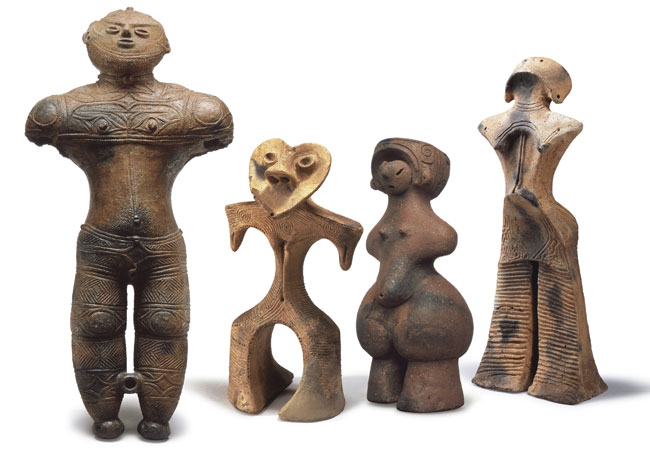
Photo source: Metropolis.co.jp
Dogu
"The Power of Dogu" museum exhibit
Tokyo National Museum, 2010

Photo source: Metropolis.co.jp |
Dogu"The Power of Dogu" museum exhibit
|
Dogu means "clay figure" in Japanese. These enigmatic Jomon figurines (ca. 13,000/10,000 BC to 400/300 BC) open a haunting window, as yet only dimly understood, to the world of prehistoric Japan. They are male and female effigies, small (most less than one foot), numerous (well over 10,000 found so far), and organized into several different types (illustrated in the photo, and see also following pages). Perhaps they were broken and buried as sacrifices, to cure an ailment or as a thank-you (ex voto) to the gods. People have also remarked upon the fertility aspects of these dogu, although not all are of the "mother goddess" type. Could they have had different purposes, depending on their geographical region and type? For all we know, they could have been worshiped as household gods, or even played with like dolls. That's unlikely, but there is still much to be learned about these appealing and mysterious figures.
Articles:
The Power of Dogu (britishmuseum.org)
The Power of Dogu (metropolis.co.jp)

|

|

|